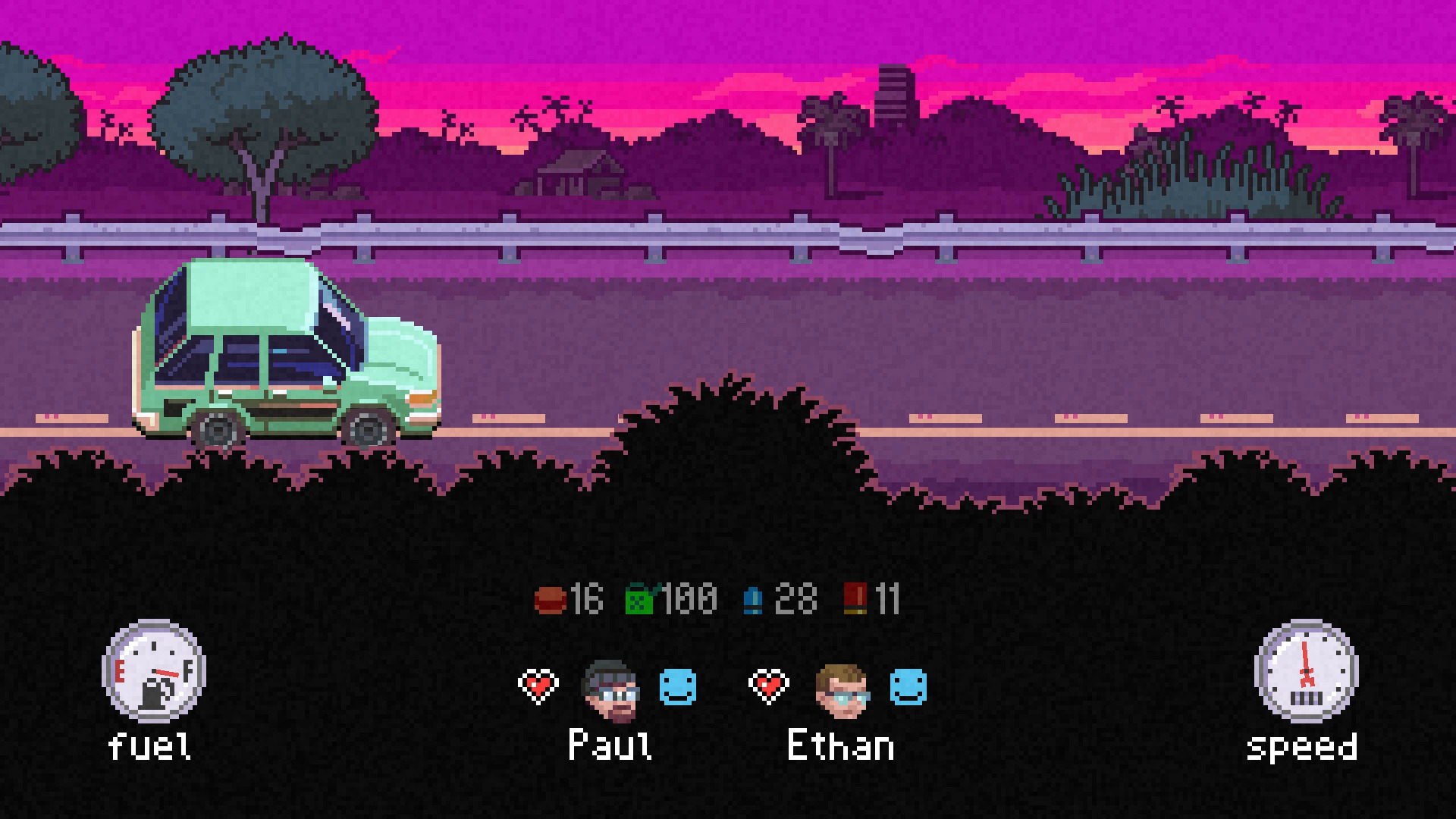With the United States infested by endless hordes of zombies, the only hope for survival is escaping to the cold and zombie-free climes of Canada. Welcome to Death Road to Canada, a very unusual game that sends players on a randomly-generated road trip to Canada. Death Road, which has just arrived on consoles after first launching on PC, supports 2-player local co-op. And that’s a good thing, because it’s also one of the hardest Roguelikes I’ve played.
One of Death Road’s best features is its character editor. Many games just let you make a custom character or two; here you can save dozens of characters. There could certainly be more body types and clothing styles, but it’s still fairly easy to create cute pixel-art versions of friends and family. And each character also gets one perk and one trait, bestowing them with proficiencies in melee combat, firearms, healing car repair, and more.
When you start the game, you’ll choose a pair of your custom characters (or be lame and go with random ones) and send them out on one of several game modes. Initially, three modes are available, including one in which you’ll primarily run into your custom characters on the road, and another filled with encounters with special characters (such as parodies of Elvis, Garfield, Jason, and more). Bumping into your grandparents or some silly character, and optionally recruiting them into your party of up to four members, can certainly be amusing.
The road trip portion of Death Road draws obvious inspiration from Oregon Trail. As your car (or other vehicle) automatically cruises along the road, the characters in the party will have silly little text-based conversations. A huge number of randomized events can occur, either benefiting or hindering the party, such as finding a safe place to camp or encountering dangerous bullies, bandits, and wild kitties. Many of these offer players interesting choices, with options and outcomes affected by the stats and abilities of the party members. Thus the driving finds a good balance between interactivity (choices) and non- interactivity (the driving itself).

Cars don’t just run themselves, though – the team must periodically stop to look for gas, food, medical supplies, and weapons. When making supply runs, players usually have a choice between two or more locations. Grocery stores are likely to hold food, apartments might offer a mix of supplies, etc. Running out of supplies can negatively impact morale (which has many effects), prevent party members from healing injuries, or even force the party to leave their vehicle behind. So you always need to be looting.
The action portion of Death Road is just as randomized as the driving portion. Depending on the event type, your primary character and his or her partner(s) must either seek out supplies and then escape to their vehicle or survive against a horde of zombies for a set amount of time before escaping. Combat is simple, with characters able to wield a huge variety of melee weapons (including cool rare swords, scythes, and more) and guns. Ammunition for guns is extremely limited, so saving them for dire emergencies often works best.
Characters can’t take very many hits before dying, and they will die often. Death Road’s inherent Roguelike difficulty (and lack of continues) is paired with increasingly tough action-stages/events. The closer you to get to Canada’s syrupy mountains, the denser the zombie hordes become. Sometimes they’re just too thick to escape. You’re bound to lose teammates along the way, though thankfully the people (and even animals) you encounter along the way can join up and help keep the team going. The game only ends when you reach Canada (a frustratingly unlikely goal) or the last member of your party dies.
